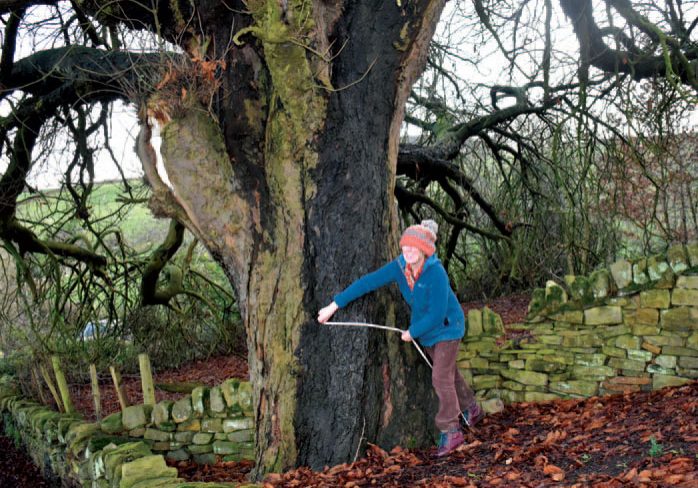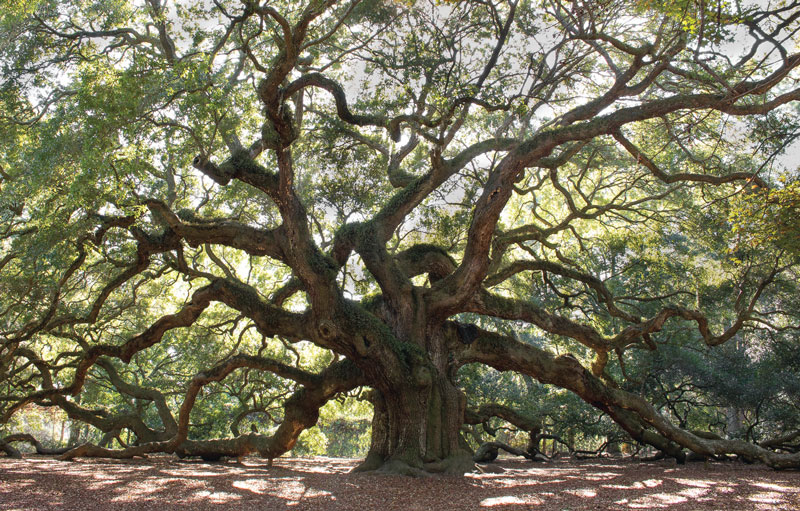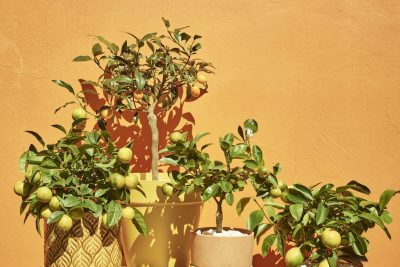
Make Time For Trees
by Northern Life
There is something truly special about trees. Not everyone is a tree hugger, but we all connect with them emotionally. A tree might be a favourite landmark that we pass each day; with their changing colour palate, trees evoke the passing of the seasons. Moss growing on a trunk signals which way is north, and a tree’s silhouette can evoke the direction of the prevailing wind. Humans have long valued trees for their fruit and nut harvest, for medicines and dyes, and as a source of timber. Today we are beginning to appreciate their importance in addressing the most critical global challenges. Trees are crucial for maintaining biodiversity, they are a vital means of storing carbon, and help mitigate the risk of flooding.
Trees first colonised Britain from Europe after the last glacial period as the climate warmed. They arrived here in waves of different species. Birch was the first pioneer followed by pine and then hazel, elm, oak, and alder. Eventually, woodland covered our land, but over the millennia it has been under threat as trees were felled for timber and woodland was cleared for agriculture or turned into plantations. Woodland now covers just 13% of the UK’s land area, a much lower figure than other European countries and just 2.5% is Ancient Woodland.
YEW
Yew trees are the most long-lived of any species in the UK. Because they become hollowed out over time, it is difficult to accurately date them, but the Fortingall specimen in Perthshire could be 5,000 years old. The hollow spaces within some of these trees have been used as a gathering place for up to a dozen people. Yew trees are often found in church yards and may pre-date the church, having grown on an earlier, pagan site. The oldest known wooden implement made by humans, a spear made from yew found in-Clacton-on-Sea, is thought to be 400,000 years old. Yew wood is strong and pliant, ideal for making the bows used by soldiers in the Hundred Years’ War. It has recently been noted that yews can change gender, switching from male to female, perhaps as a response to stress.

OAK
The oak looms large in our nation’s psyche. Its fruit is the symbol of the National Trail, its leaves the logo of the National Trust and its distinctive outline is used to evoke endurance, strength, and quality. Tudor and Stuart monarchs planted oaks to meet the navy’s needs. Oak trees produce acorns annually – acorns were once an important food source and trees in a region synchronize their acorn production. Oaks are fantastic for wildlife – a mature oak can be the life-support system for 2,500 species.

ROWAN
The rowan tree has long been planted as a protection against the supernatural and is still found at the front door of many properties and displayed above the lintel of fireplaces to preclude witches from entering. Its wood has been used for stirring milk to prevent curdling, as a pocket charm against rheumatism, and for divining rods. Also known as the mountain ash because it is happy to grow at high altitudes, the rowan is common in gardens thanks to its limited size and bright berries – a feast for wildlife.

TREE PLANTING
Humans have long been planting trees. We know from their horticultural manuals, that the Romans were keen tree planters – they marked each specimen with red ochre before it was moved so that it could be replanted with the same orientation, and we can thank the Romans for introducing the walnut tree and the sweet chestnut to Britain. Tree-planting was also a valued Jewish tradition. In the first century CE, the Talmudic rabbi Yohanan ben Zakkai, said that if a person holding a sapling heard that the Messiah had arrived, he should finish planting before going to greet him.
GET INVOLVED!
Ancient Oak
There has never been a more important time to plant trees – it is estimated that we need to double the number of trees to achieve our carbon reduction targets. Planting a tree is a way to connect with the seasons, it feels like a miracle that something as small as an acorn can grow into a mighty oak, and planting something potentially so long-lived gives us a stake in the future. There is a dearth of outdoor tasks in winter, but it is the perfect season for tree-planting as trees are best planted when they are dormant. Planting a tree is an energetic but short-lived activity. If you have a garden, choosing native species is generally best for wildlife, or a fruit tree can be a good choice. These are grafted onto rootstock, making it easy to select one which will grow to a size which suits its new home. Their blossoms in springtime feed insects and prompt optimism; an autumn harvest is a welcome source of fruit. If you don’t have space for a tree, planting a hedge can be a great option.

The best and cheapest way to source trees is to buy bare-rooted stock online. The Woodland Trust is a fantastic source of information about native trees and how to plant them. There is plenty of choice, for example there are over 3,000 types of apple tree, so take time to consider what is important to you. Will your tree provide year-round interest and attract wildlife to your garden? Will it thrive in the north of England?
You don’t need a garden!
• The Woodland Trust want to plant 50 million trees in four years. They provide free packs of trees for schools and community groups: woodlandtrust.org.uk
• The Trust for Conservation Volunteers offer free saplings for community groups to deliver their ‘I dig trees’ project to benefit the climate, wildlife and communities: tcv.org.uk
• Volunteer to become a tree warden and champion trees in your local area go to treecouncil.org.uk
You don’t need a spade, but you can dig deep!
• The National Trust aim to plant 20 million trees – celebrate a loved one by having a tree planted: nationaltrust.org.uk
• Trees for Life run conservation weeks in the Scottish Highlands and are supported by donations: treesforlife.org.uk
• Biodiversity and climate change are global issues – perhaps you want to help protect rainforests: rainforesttrust.org and Tree Sisters runs projects led by women to accelerate tropical reforestation: treesisters.org




